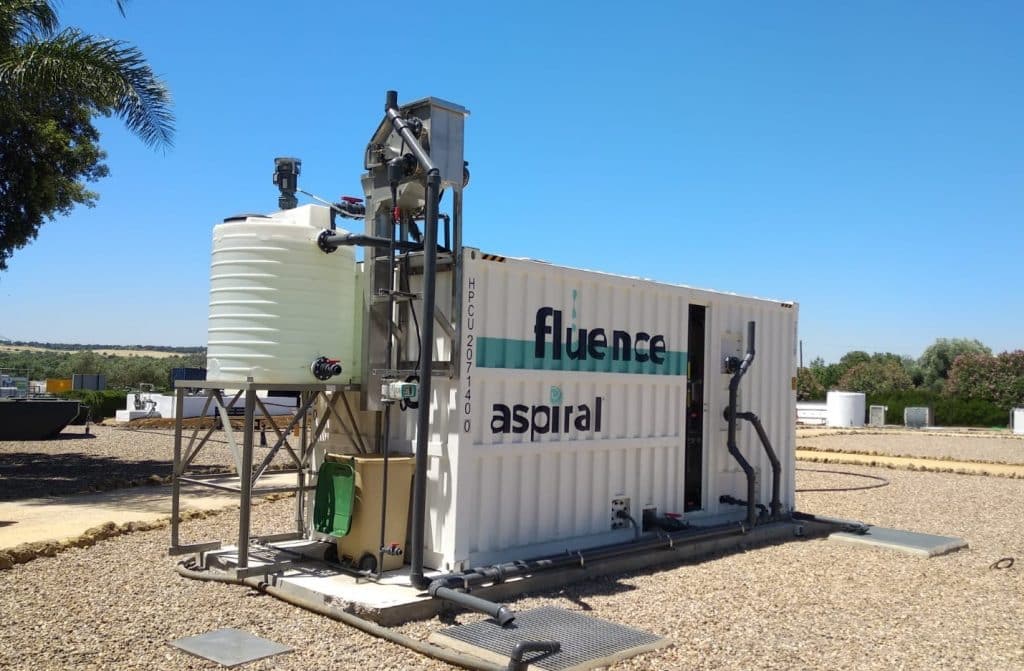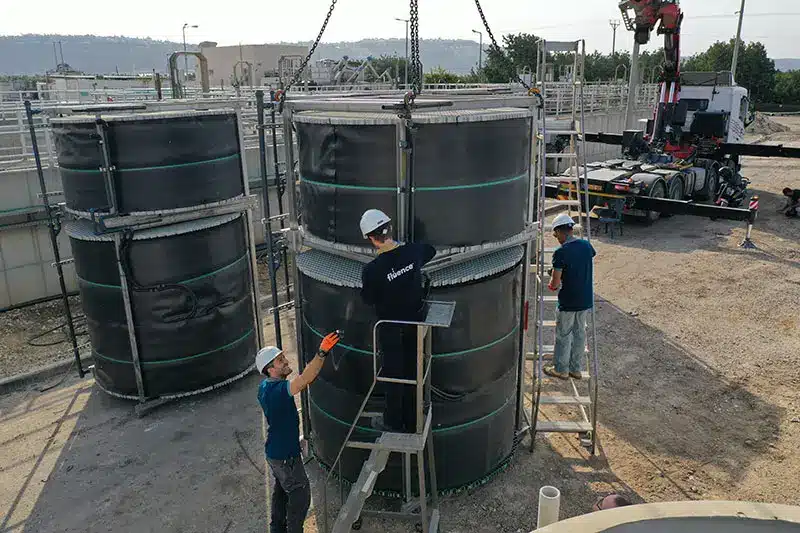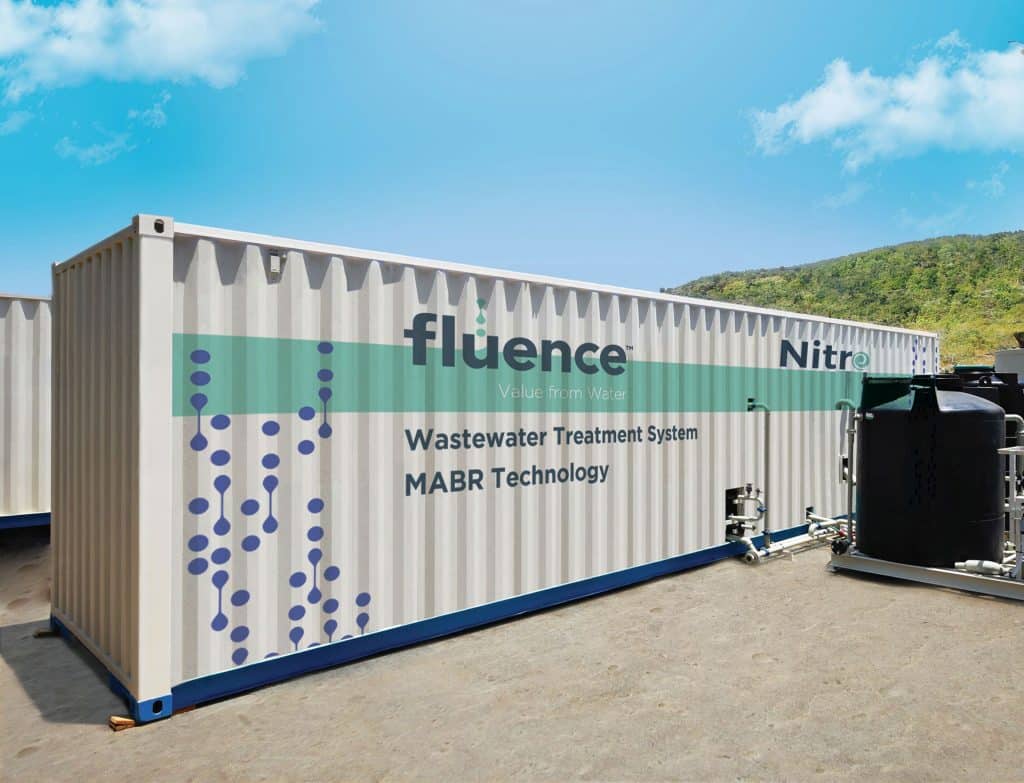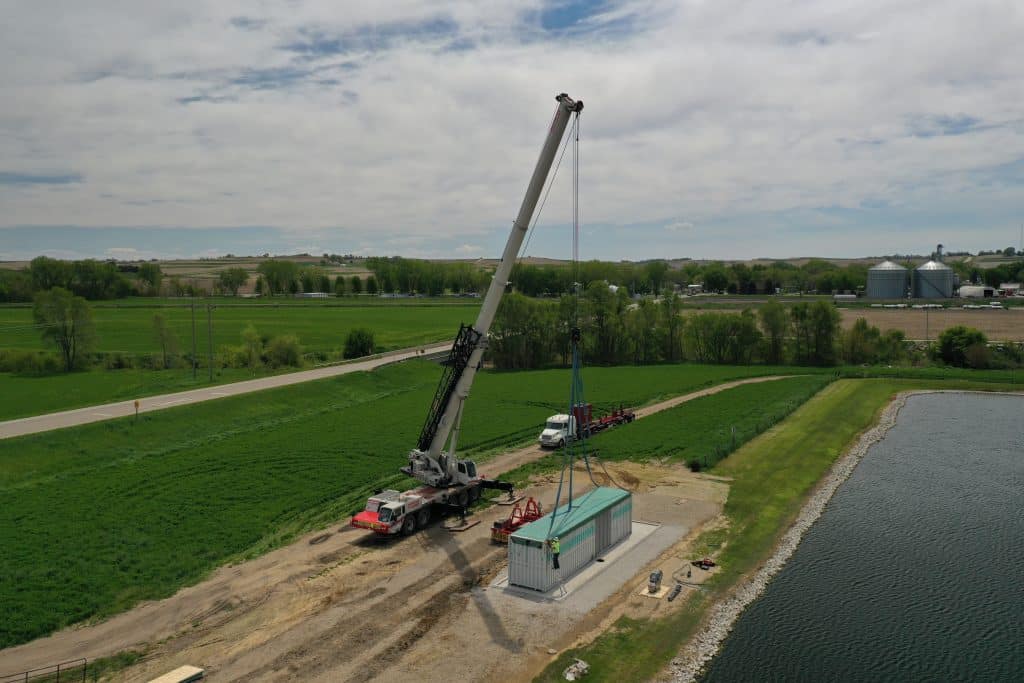Fluence offers Iowa towns practical solutions for meeting tough wastewater nutrient standards without overwhelming local budgets or resources.
Affordable wastewater solutions help small towns with compliance challenges
Iowa’s small towns face new wastewater nutrient limits that could overwhelm local budgets if addressed with traditional plant upgrades. Stricter nitrogen and phosphorus standards mean communities must modernize treatment systems or risk fines, stalled development, and tighter regulatory scrutiny. Fortunately, modular upgrades now offer an affordable and efficient path to compliance — without placing the burden on taxpayers.
Iowa’s Water Quality Challenge
Nutrient pollution has become one of Iowa’s most pressing water quality issues. Excess nitrogen and phosphorus from agriculture, industrial and municipal wastewater discharges, and stormwater runoff have led to algal blooms, fish kills, and declining water quality in rivers and lakes.
These nutrients eventually flow downstream into the Gulf of Mexico, where they stimulate algae growth. When the algae die and decompose, they strip oxygen from the water, contributing to the hypoxic “dead zone,” where aquatic life cannot survive the low oxygen levels.
To address rising nutrient pollution, Iowa has introduced its Nutrient Reduction Strategy, a science- and technology-based plan to reduce nitrogen and phosphorus discharges. For affected municipalities and industrial facilities, this means stricter oversight of wastewater treatment plants and mounting pressure to reduce nutrient levels.
While these efforts offer clear environmental benefits, including cleaner water and healthier ecosystems, the cost implications of compliance for small towns with limited resources can feel daunting.
Iowa’s Nutrient Standards: What They Mean for Municipalities
So how is Iowa responding to these water quality problems? The state has introduced strict new nutrient standards that are designed to bring municipal wastewater nutrient discharges in line with Environmental Protection Agency water quality targets. Iowa’s Nutrient Reduction Strategy sets ambitious goals aiming for statewide reductions of 41% in nitrogen and 29% in phosphorus loads. To move toward these targets, Iowa Department of Natural Resources is requiring municipalities to study and reduce nutrient discharges as part of NPDES permit renewals.
Facilities are increasingly being asked to meet nutrient reduction goals aligned with 10 mg/L TN and 1 mg/L TP, benchmarks consistent with EPA water quality targets.
According to the DNR, when a facility renews its National Pollutant Discharge Elimination System (NPDES) permit, it must undertake a two-year study to report current nutrient discharge levels, establish a baseline, and assess the viability of upgrading its system to enhance nutrient removal. They must also create a schedule for the construction and implementation of the nutrient removal technology.
Once this timeline is approved by the DNR, it will become part of the facility’s permit requirements.
Why Small Towns Face the Biggest Challenge
While large cities often can absorb the cost of new treatment plants to meet the new nutrient standards, small and mid-sized Iowa towns face unique obstacles.
- Limited funding and capital: Smaller towns have smaller populations and a limited tax base, making it difficult to finance traditional treatment plant overhauls.
- Lagoon limitations: Many rural wastewater treatment facilities depend on lagoon-based systems, originally designed and built to offer basic wastewater treatment, not advanced nutrient removal. That means costly upgrades may be unavoidable.
- Noncompliance risks: Without these improvements, municipalities could be fined for noncompliance or even lose their operating permits. Failing to comply with regulatory standards can also stall new housing projects, limit opportunities for industrial growth, and invite stricter regulatory scrutiny, risking the community’s long-term development.
These challenges call for efficient, affordable solutions that can meet the new requirements and be financially doable for smaller communities.
Solutions for Nutrient Removal
Fortunately, there are proven technologies that make it possible to meet these nutrient standards with retrofits and upgrades rather than replacing entire systems. Key approaches include:
MABR (Aspiral™)

Aspiral™ Flex delivers advanced nutrient removal in a compact, containerized system — ideal for upgrading lagoon-based treatment plants without costly reconstruction.
Fluence’s Aspiral™ Flex system delivers a powerful upgrade for lagoon-based systems by introducing advanced, energy-efficient membrane aerated biofilm reactor (MABR) technology packaged in a modular, containerized unit. Units can be installed upstream or alongside lagoons rather than being submerged in the lagoon.
This facilitates seamless integration with existing lagoons and begins delivering improved nitrogen and phosphorus removal immediately. By delivering oxygen through semipermeable membranes, MABR enables simultaneous nitrification and denitrification in a compact footprint. That significantly reduces energy use compared to conventional aeration methods while ensuring reliable compliance with regulatory nutrient discharge limits.
Aspiral™ Flex remains effective even in cold temperatures and variable flow conditions, providing lagoon-based systems with a resilient, low-maintenance solution for meeting modern nutrient standards.
SUBRE Retrofits

SUBRE retrofits bring advanced nutrient removal into existing basins, boosting capacity and cutting energy use by up to 30% without major construction.
Fluence’s SUBRE solution incorporates advanced nutrient removal into existing wastewater treatment plants without major construction. By submerging compact MABR module towers into existing basins, SUBRE enhances nutrient removal quickly and cost-effectively.
The retrofit not only delivers substantial reductions in nitrogen and phosphorus levels but also increases treatment capacity and cuts energy use by up to 30%. Because it works within the plant’s current footprint, SUBRE offers a practical, low-disruption solution for meeting stricter nutrient standards.
Nitro Technologies

Fluence’s Nitro system streamlines shortcut nitrogen removal, achieving over 90% efficiency while reducing energy costs by about 40%.
Fluence’s Nitro technology leverages MABR systems to deliver an efficient shortcut nitrogen removal process that is particularly effective for high-nitrogen side streams. By converting ammonia to nitrite and then directly to nitrogen gas, skipping the nitrate phase, Nitro achieves more than 90% total inorganic nitrogen removal while eliminating up to 20% of a plant’s total nitrogen load.
This streamlined process not only saves time and resources but also reduces energy consumption by around 40% compared to conventional nitrogen removal methods. Designed for seamless integration, Nitro can be added as a containerized module or retrofitted into existing treatment plants for a low-maintenance, energy-efficient solution that delivers fast compliance and robust performance, even under load fluctuations and low-temperature conditions.
How Containerized Solutions Ease Compliance
Prepackaged containerized and modular treatment plants offer a smart, flexible way to achieve nutrient compliance. These systems can be deployed quickly and scaled in phases as the community grows, preventing overbuilding and keeping costs under control. This approach ensures that municipalities meet today’s nutrient standards while staying prepared for tomorrow’s growth.
Case Study: Lagoon Upgrades in the Midwest

In Dow City, Iowa, Fluence’s modular Aspiral™ M2+ unit transformed an aging lagoon into a compliant, energy-efficient system within six months.
These approaches aren’t just theoretical. In the tiny rural town of Dow City, Iowa (population under 500), strict new wastewater discharge rules posed a significant challenge for an aging lagoon system. Rather than building a new treatment plant, which would have been costly and disruptive, Dow City partnered with Fluence to install a single Aspiral™ M2+ unit, the first MABR system in Iowa.
This compact, modular system integrates with existing lagoon basins and operates efficiently even in weather down to 37°F, delivering effective nitrogen removal and disinfection with low energy use.
Key outcomes include:
- Minimal capital expenditure and rapid deployment — just six months from order to startup.
- Enhanced effluent quality: BOD < 25 mg/L, TSS < 30 mg/L, and total nitrogen < 10 mg/L, meeting or exceeding regulatory targets.
By retrofitting rather than replacing infrastructure, Dow City achieved compliance affordably, with reduced energy costs and within its existing footprint, serving as a model for small lagoon-dependent communities.
Dow City is just one example. Across Iowa, modular containerized plants bring the same advantages: fast deployment, lower OPEX, and scalable growth. Financing models like build-own-operate and leasing make them attainable for towns of any size.
How Fluence Helps Iowa Municipalities
Fluence offers Iowa towns practical solutions for meeting tough nutrient standards without overwhelming local resources. With expertise in lagoon upgrades and packaged, decentralized treatment plants, Fluence designs solutions that are efficient and scalable and built to last.
The company has a record of helping municipalities achieve and maintain regulatory compliance, thereby avoiding costly penalties while protecting local waterways. Fluence makes these upgrades attainable through flexible partnership options, including Build-Own-Operate, leasing, and O&M services that lower upfront costs and ensure long-term performance.
For towns under pressure to comply without overextending resources, Fluence provides the tools and the support to succeed.
Connect with us to discover how your community can upgrade affordably, sustainably, and on schedule. You can also contact our team to learn more about our nutrient removal solutions.

